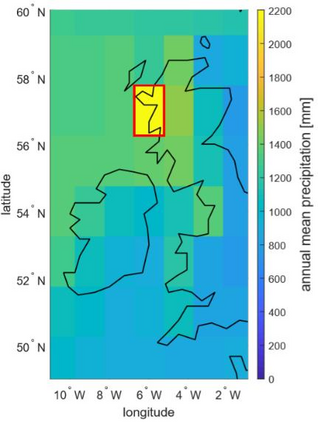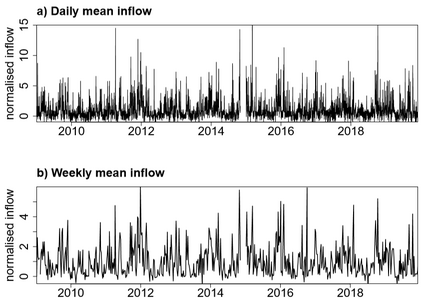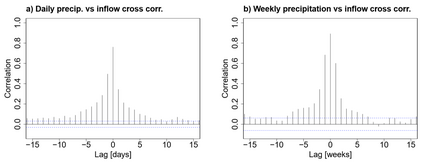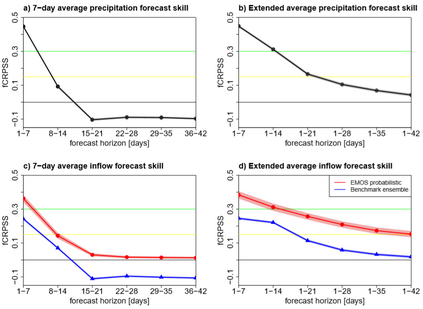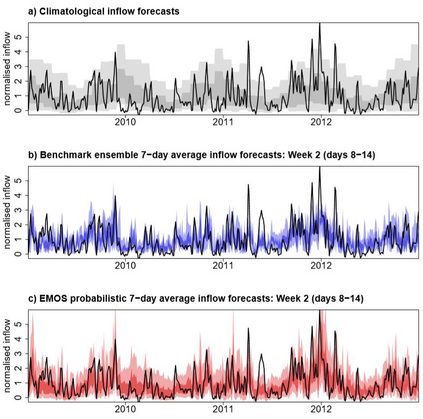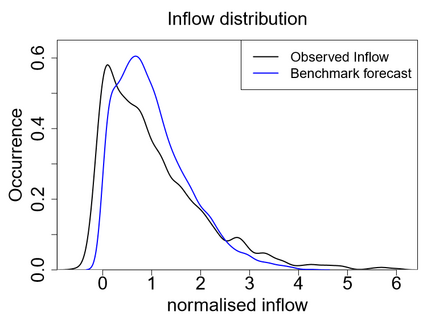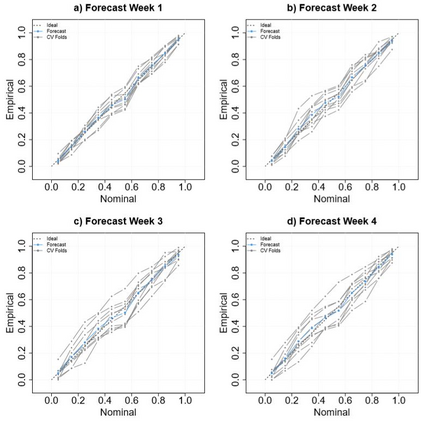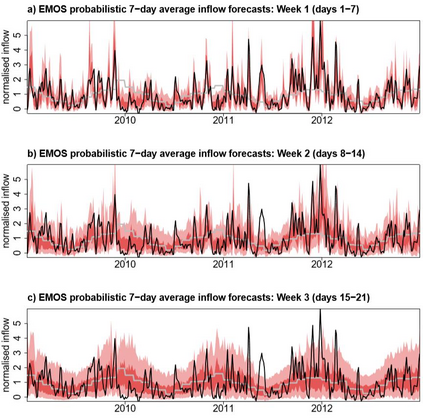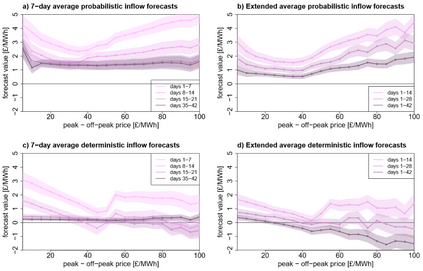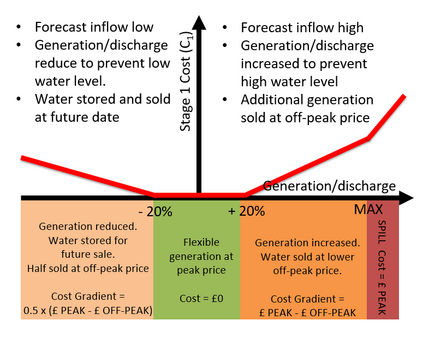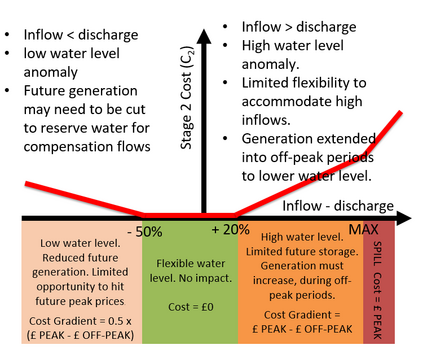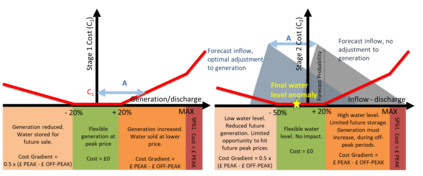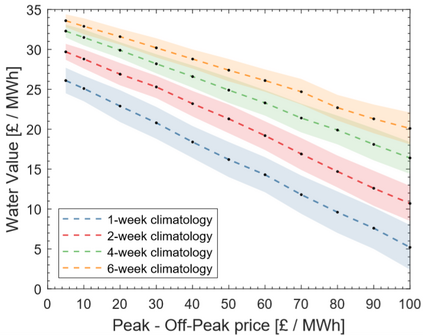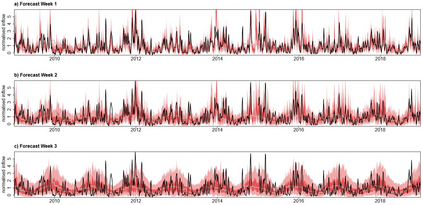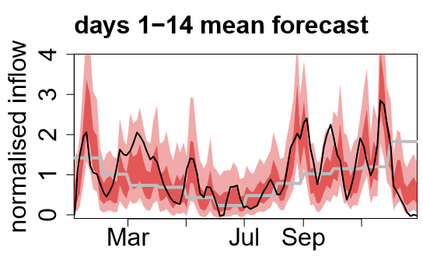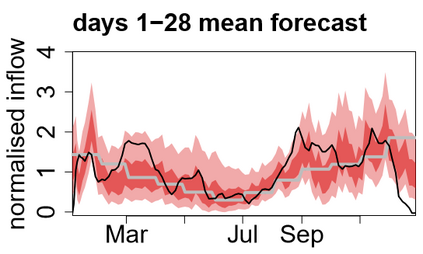Inflow forecasts play an essential role in the management of hydropower reservoirs. Forecasts help operators schedule power generation in advance to maximise economic value, mitigate downstream flood risk, and meet environmental requirements. The horizon of operational inflow forecasts is often limited in range to ~2 weeks ahead, marking the predictability barrier of deterministic weather forecasts. Reliable inflow forecasts in the sub-seasonal to seasonal (S2S) range would allow operators to take proactive action to mitigate risks of adverse weather conditions, thereby improving water management and increasing revenue. This study outlines a method of deriving skilful S2S inflow forecasts using a case study reservoir in the Scottish Highlands. We generate ensemble inflow forecasts by training a linear regression model for the observed inflow onto S2S ensemble precipitation predictions from the European Centre for Medium-range Weather Forecasting (ECMWF). Subsequently, post-processing techniques from Ensemble Model Output Statistics are applied to derive calibrated S2S probabilistic inflow forecasts, without the application of a separate hydrological model. We find the S2S probabilistic inflow forecasts hold skill relative to climatological forecasts up to 6 weeks ahead. The inflow forecasts hold greater skill during winter compared with summer. The forecasts, however, struggle to predict high summer inflows, even at short lead-times. The potential for the S2S probabilistic inflow forecasts to improve water management and deliver increased economic value is confirmed using a stylised cost model. While applied to hydropower forecasting, the results and methods presented here are relevant to broader fields of water management and S2S forecasting applications.
翻译:水流预测在水力水库管理方面发挥着必不可少的作用。预测有助于操作者提前安排发电时间,以尽量扩大经济价值,减轻下游洪水风险,并满足环境要求。运行流量预测的地平面往往限制在距未来约2周的距离,这标志着确定性天气预报的可预测性障碍。次季节至季节(S2S)范围的可靠流量预测将使操作者能够采取积极主动的行动,减轻不利天气条件的风险,从而改善水管理和增加收入。本研究报告概述了利用苏格兰高原的案例研究库获得熟练的S2S2S流入预测的方法。我们通过对观察到的流入S2S2的直线回归模型进行培训,产生加速的流量预测。欧洲中度天气预报中心(ECMWF)的混合降水量预测预测往往具有可预测性。随后,通过综合模型输出的处理技术来得出校准S2S2S概率预测,从而改进流量预测。我们发现,S2S2系统流量预测的稳定性预测在苏格兰高地进行,在预测中采用更精确的预测,在预测中,在预测中采用更精确的时期进行,在预测中,在预测中,在预测中进行更精确的预测,在预测中进行。在预测中,在预测中,在预测中采用更精确的周期中进行,在预测是,在预测是,在预测,在预测中进行,在预测中进行,在预测,在预测中,在预测中,在预测中,在预测中进行更精确到预测的期间进行,在预测,在预测的周期中,在预测是比前进行。

